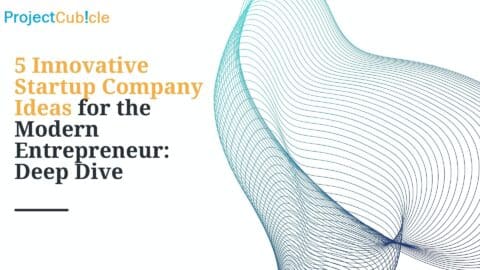Understanding the Nursing Shortage and Where it Will Be in the Next Few Years
Nurses play an essential role in our healthcare system, whether they are working in hospitals, clinics, schools, or other settings. In hospitals, they provide the majority of direct patient care and coordinate with other members of each patient’s healthcare team to carry out their treatment plans. Currently, we are facing a significant nursing shortage in the United States. We need more new nurses joining the workforce to replace those who are leaving the field and to handle the growing influx of patients who need care. Here’s what’s behind the nurse shortage and where we’ll be in the next few years.
Table of Contents
The Basics of Nursing Shortages – History and Impact
Nursing shortages are nothing new. Historical events, such as World War II, shape the job market significantly and can have an effect on hospital staffing levels. Demand for nursing services also depends on the demographics of both the patient population and the nurse population.
The problem with nursing shortages is twofold. First, patient care suffers when there aren’t enough nurses to provide adequate care. At the same time, nurses become stretched thin and struggle with issues like burnout and chronic stress. In many cases, this can lead to nurses leaving the field and making the problem even worse.
Understanding the causes and consequences of nursing shortages is critical for finding ways to address the problem, such as giving highly trained nurses and nurse practitioners more autonomy. Nursing shortages tend to be cyclical, but it’s still important for governments, hospitals, and nursing schools to work together and find workable solutions.
Why is there a shortage of nurses?
There are several reasons for the shortage of nurses. Factors include an aging population requiring more healthcare services, an aging nursing workforce nearing retirement, limited enrollment in nursing programs, high attrition rates, and increased demand for healthcare due to advancements in medical technology and access to care.
Which countries have the highest shortage of nurses?
South East Asia and Africa have the greatest needs-based shortages of nurses and midwives. The globe Health Organization (WHO) projects that by 2030, the globe would require an extra 9 million nurses and midwives in order for all nations to meet Sustainable Development Goal 3 on health and well-being.
What’s Causing Modern Nursing Shortages?
The current nursing shortage is driven by several factors that are coexisting at once. The first is the overall patient population. The large Baby Boomer generation is aging, which means that their care needs are increasing. As people get older, they have more complex healthcare needs and chronic condition management.
As the demand for healthcare services is rising due to an aging population, nurses within this age group are retiring. They leave vacancies behind, and they are also no longer available to help train new nurses.
Nursing schools are struggling to expand capacity as the demand for qualified registered nurses grows. Getting enough nurse educators and opportunities for clinical learning experiences can be a major obstacle.
Finally, many nurses have left the field since the COVID-19 pandemic. Working conditions and exposure to the virus pushed many nurses to develop mental health conditions, burnout, and chronic stress.
Today, though the virus is no longer hospitalizing people at a high rate, the nursing shortage continues to make the workplace stressful for those who are working in the field.
Current Challenges in the Nursing Profession
One of the biggest challenges in the nursing profession at the moment is limiting burnout and stress among those working in the field. With the current shortage, it’s critical to retain as many working nurses as possible.
Many nurses lack the support and resources they need at work. They struggle to maintain a healthy work-life balance because more and more responsibilities keep getting added to their workload. Artificial intelligence and robotic nurses are helping to ease this problem somewhat, and has been particularly effective in reducing problems such as medical errors.
Although technology has helped to reduce the tasks that nurses have to perform manually, there is still far more work for nurses to do in most hospitals than their staffing levels can reasonably handle. Many hospitals ultimately have to bring in expensive temporary or supplemental staff to help ensure quality patient care.
The staffing in nursing shortage has also affected different regions to varying degrees. In rural areas, it can be very difficult for hospitals to attract and retain staff. As these areas tend to have higher populations of older residents and people who live in poverty, this lack of nurse staffing can have particularly punishing consequences. Underserved populations are, unsurprisingly, being hit the hardest by the shortage.
Addressing the Nursing Shortage
Nursing is an interesting and fulfilling job, even though it can be stressful. Attracting people into the profession isn’t necessarily the biggest problem: it’s training them and retaining them. For many, the high cost of nursing school and their competing responsibilities is holding them back from earning a nursing degree.
There are lots of strategies that can be used to address the nursing shortage, including:
- Offering flexible educational options and increasing scholarships/grants
- Investing in nursing programs and training more nurse educators
- Increasing outreach to generate interest in the nursing profession and its many options
- Offering increased pay, better benefits, and more flexibility for nurses
- Providing continuing education options and sponsoring advanced training
- Encouraging telehealth use and improving policies surrounding remote care
- Investing in technology to assist nurses
- Strengthening nursing unions
A projected job growth of 9% by 2023 is expected for nurses. To meet that demand, lawmakers and government officials, hospital administrators, and nursing schools will need to work together to make education more accessible and affordable and to create strong retention programs. Becoming a nurse is an investment, and the benefits of getting into the field need to be strong enough to earn that investment to prevent nursing shortage.
How the Shortage Will Affect the Field of Medicine in the Coming Years
Even as the shortage is causing problems now, these problems are unlikely to ease anytime soon. It takes at least a few years to train a new nurse and many of these staffing issues will continue to persist in the coming years, even if quick action is taken.
The shortage is and will continue to influence wait times for patients, which leads to worse outcomes overall. It will also make the profession of nursing more grueling, although it should give nurses more leverage in terms of compensation.
At the end of the day, nursing shortages in medicine affect everyone, though some will suffer more than others. As we look at this problem, it’s important to think of strategies that will help us now and help to stabilize the industry in the long term. To make meaningful progress, it will be important to treat the problem itself, not just the symptoms.
Irwin Michael Reston is an expert who has more than 30 years of experience in optimizing businesses, inspiring individuals and improving human resources departments. He established the BlueLight Consulting Limited to provide learning and training service worldwide.












